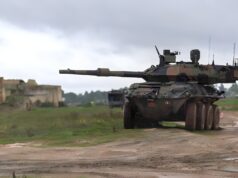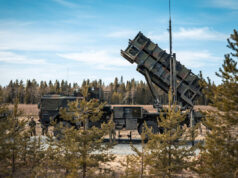NATO say that the scheduled re-structure of the Baltic Air Surveillance Network or BALTNET will see the activation of three national Control and Reporting Centres (CRC) in Estonia, Latvia and Lithuania.
The Alliance say that this allows for improved capabilities and interoperability of NATO’s Integrated Air and Missile Defence System in the region to help safeguard Allied airspace.
The three Baltic Allies Estonia, Latvia and Lithuania, have launched the cooperative project of the BALTNET future configuration to further enhance their air surveillance and control capabilities in the region and thus their contribution to NATO’s collective defence effort and architecture.

“By establishing a CRC in each of our three countries, we achieve a joint and combined capable network. The individual functional units will eventually provide a more robust package for the region. We are confident and proud that this will markedly increase our capabilities especially as we contribute to controlling NATO aircraft in support of the Alliance’s Baltic Air Policing mission,” said Major Tõnis Pärn, senior Estonian officer at Baltic CRC Karmelava, one of the stakeholders in the project.
According to a NATO news release, the BALTNET co-operation project was launched in 1998 as a system for acquisition, coordination, distribution and display of air surveillance data within the three Baltic States. Its objectives encompass international co-operation between civilian and military air traffic authorities and the development of the respective functions in all participating states. As such, BALTNET was a major stepping stone for helping to the Baltic States to contribute to and to integrate with NATO structures.

Since 2004, when the Baltic States joined the Alliance, the system has been an integral component of NATO’s Integrated Air and Missile Defence System. Within this framework, Estonia, Latvia and Lithuania established and jointly manned the CRC at Karmelava, Lithuania, which reported to CAOC at Uedem.
This one centre will now be replaced by three national CRCs in the Baltic States. As a next step it is planned to equip these units with NATO’s Air Command and Control System (ACCS) Software Based Element to further improve capabilities and interoperability.










